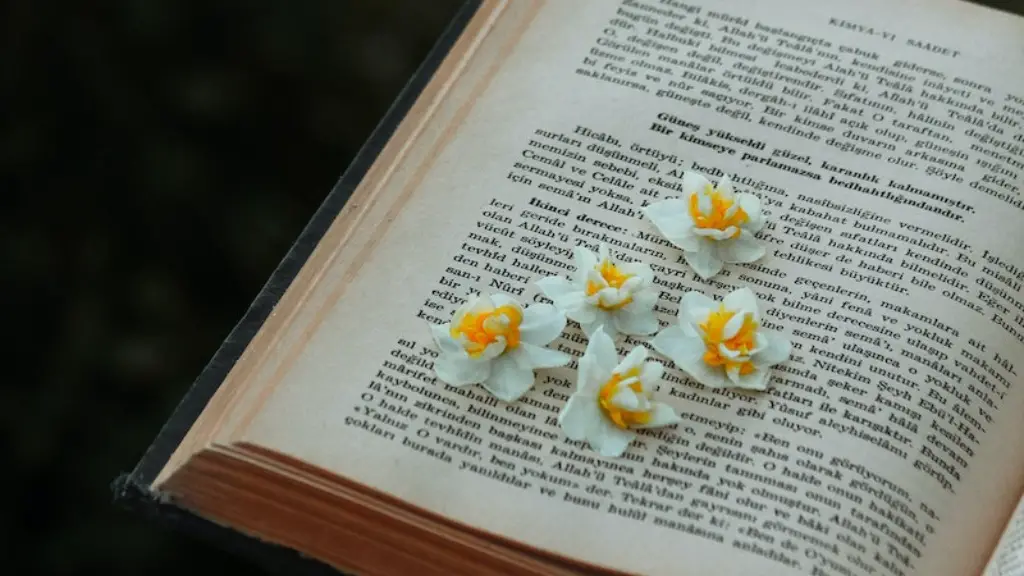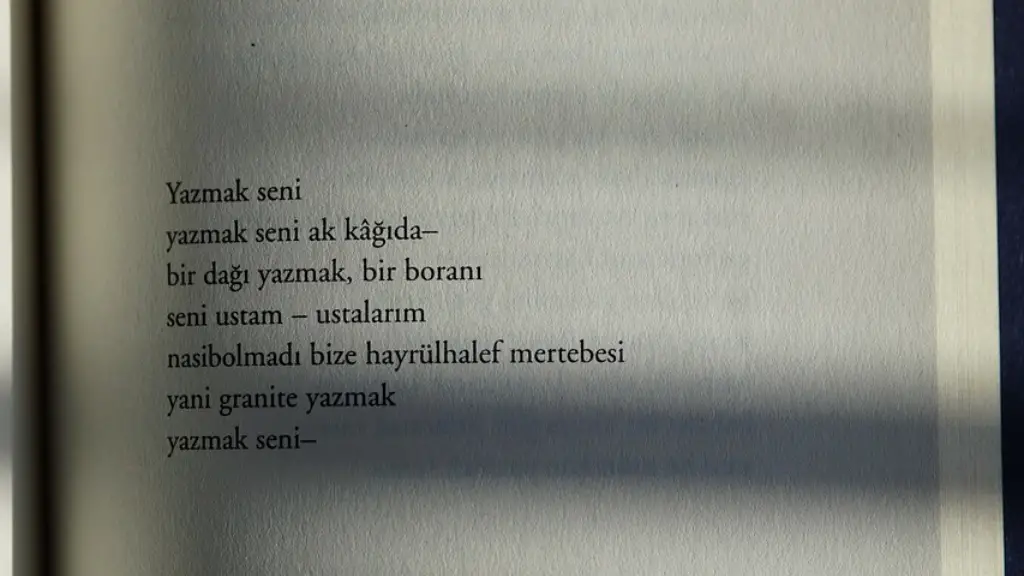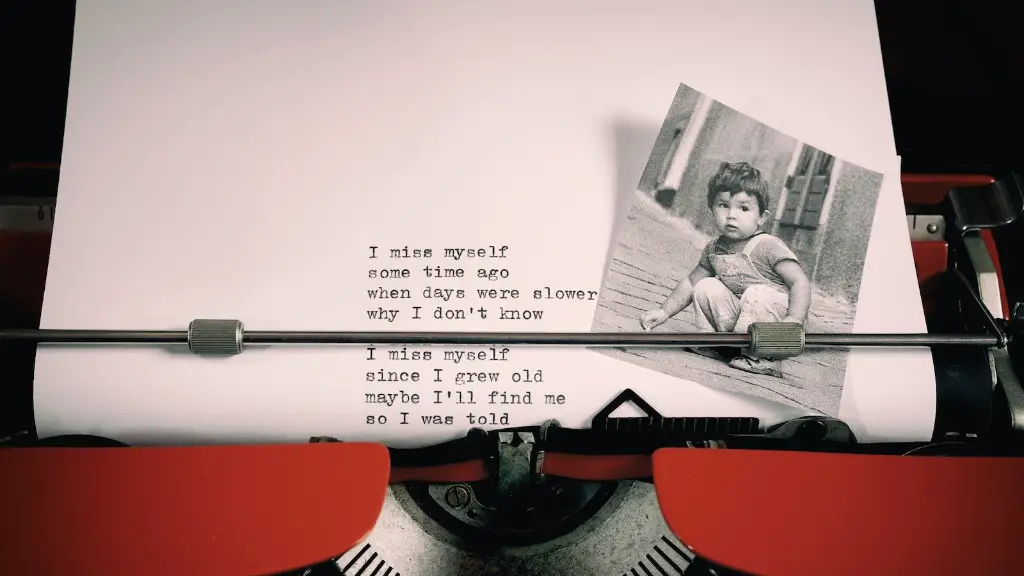Linguistic Basics
English poetry has a unique and fascinating relationship with language. Unlike prose, which tends to rely on more literal meanings, poetic language often has more depth, nuance and complexity. The way poets use language can vary from literal to figurative, literal to metaphorical and everything in between. It is the combination of these elements that make English poetry so engaging. With this guide, you’ll learn the basics of English poetry and its language nuances, and how it can transform a work of art into something extraordinary.
When it comes to the language of English poetry, there are three main elements to consider: diction, imagery, and meter. Diction is the choice of words and language used in the poem. Imagery is the use of figurative language, such as metaphors, symbolism, and personification. Meter is the rhythm of the poem, which is created using specific patterns of stressed and unstressed syllables. All of these elements come together to create a unique and powerful voice.
When analyzing poetry, readers must also look at how the writer is using language to convey meaning. This could be through wordplay, sound devices, metaphor, or figures of speech. For example, a sonnet by William Shakespeare may use iambic pentameter to create the desired effect. Another poet may use imagery to illustrate the mood of the poem.
The language used in poetry can also tell us a great deal about how the poem is meant to be interpreted. A poem can be written from the point of view of an individual, or it can be written as a personal reflection on a larger concept or theme. This type of analysis is an important factor in understanding the meaning of a poem.
Important Poetic Devices
Most English poems utilize poetic devices to convey meaning. Poetic devices are tools used by the poet to create a desired effect in their writing. These can include alliteration, assonance, rhyme, and rhythm. Alliteration is the repetition of consonant sounds at the beginning of a line or words within a line. Assonance is the repetition of vowels within a line. Rhyme is the repetition of similar sounds at the end of words.
Rhythm is an especially important tool used in English poetry. Rhythm creates a flow in the writing, and can be achieved through the use of meter and rhyme schemes. Meter is the practice of counting and accenting syllables in a line of poetry. Meter is usually created by grouping lines in sets of two or three and then counting the syllables in each one. Rhyme schemes involve using similar sounding words or syllables to create a pattern. These patterns can help to give the poem a unique rhythm and make it easier to remember.
Metaphors, similes and hyperbole are also important poetic devices used in English poetry. Metaphors are used to make a comparison between two things without using the words “like” or “as”. Similes are a form of metaphor where the comparison is made more explicit. Lastly, hyperbole is an exaggeration used to emphasize a point. By combining these devices in interesting ways, poets are able to create a body of work that is both beautiful and meaningful.
Modern English Poetry
Modern English poetry is often much more complex and nuanced than traditional works. Poets of the 21st century often challenge traditional forms and styles of poetry, while simultaneously exploring language in new ways. While some poets might be more traditional in their approach, others may use language to express powerful ideas and concepts.
Modern poets also make use of experimental techniques to create unique and compelling works. These techniques can include the use of neologisms, or newly invented words or phrases; personification and metonymy, which is when a specific thing or phrase is used to represent a larger concept; and wordplay, which is when a poet uses similar sounding words for humorous or poetic effect.
Many modern poets utilise these techniques to explore the relationship between language and the real world, often in order to convey powerful messages. Poets such as Warsan Shire, Nayyirah Waheed, and Amanda Gorman are just a few examples of poets who have used language in powerful and innovative ways to speak to the issues that are facing society today.
The Impact of English Poetry
For centuries, English poetry has been a powerful form of communication. Poets have used language to express their feelings, challenge societal norms, and create a sense of emotion and connection between the reader and the poet. From William Butler Yeats to Audre Lorde, poets have used language to craft an unforgettable experience. English poetry is an invaluable way to understand and appreciate the world in which we live.
The impact of English poetry can be seen in society today. The growing popularity of spoken word and rap has been credited to the influence of English poetry, and many poets have become icons within the literary world. Poets such as Maya Angelou and Langston Hughes are just a few examples of how far-reaching the influence of the genre can be.
English poetry has the power to evoke emotion, inspire thought, and open readers to new perspectives. Poetry can be a powerful source of comfort, and poets often use language to create a feeling of understanding and hope. It is through poetry that language becomes a living, breathing thing, and readers can be transformed by its words.
Modern Conventions of English Poetry
Today, there are many ways to write English poetry. This is largely due to the changing conventions that have been shaped over the centuries. For example, the rise of modernism has led to the emergence of free-verse poetry, which is written without using traditional meter or rhyme. There are also more contemporary conventions such as spoken word and rap, which have become increasingly popular in recent years.
Poets today may also choose to experiment with different formats, such as prose or visual poetry. Visual poetry can be created using a combination of words, symbols or images to convey meaning, while prose is written in a more narrative form. By pushing the boundaries of convention, contemporary poets can create works that are both innovative and thought-provoking.
No matter the style or format, the core of all English poetry has remained the same. Poetry is an expression of life and emotion, a way to convey ideas, and to inspire readers to think more deeply. It is a powerful art form that has been used throughout history to capture the essence of life.
English Poetry Across Borders
English poetry is not limited to English-speaking countries, and readers across the world can connect with and appreciate its power. English is the most widely spoken language in the world and is used to communicate across cultures and boundaries. Poetry in translation can introduce readers to different cultures and countries, providing a greater understanding of the world and its people.
Many countries have their own unique style of English poetry, often influenced by their culture and language. Modern poets such as Juan Felipe Herrera, a Mexican-American, and Australasian author Ocean Vuong have explored their cultures, histories, and languages in powerful ways through their poetry. By reading these works, readers can gain an appreciation for English poetry in its many forms.
English poetry is a powerful form of expression that has the potential to bridge cultures and borders. By exploring different styles and conventions, readers can gain a greater understanding of the world around them, while also enjoying the beauty of the language. English poetry can be a source of comfort and encouragement in times of need, or simply a way to celebrate the magic of the written word.
English Poetry In Our World Today
In its many forms, English poetry continues to be an important art form in our world today. Poets from all cultures and backgrounds are using language to express themselves and to connect with readers. Technology has also opened up new pathways for poets, allowing a wider range of voices to be heard. With the power of the internet and platforms such as YouTube and Instagram, poets can reach a larger audience and further disseminate their works.
English poetry has a long and storied history, and its importance has only grown over time. Poetry allows us to express our innermost thoughts and feelings, and to reflect upon the experiences we’ve had. It can be a source of comfort and inspiration, and an effective way to communicate with each other. English poetry can help us to make sense of our world, and as readers, we can use it to enrich our lives.
English Poetry As A Tool For Education
English poetry can be a powerful teaching tool, helping students to develop stronger language skills and engaging the reader. By exploring poetry, students can gain an understanding of literature, language, and culture, while also developing important writing and critical thinking skills. It can also be a great way to explore difficult topics in a non-threatening environment.
In addition, English poetry can also inspire creativity and foster a love of language and literature in students. Teachers can use poetry as a way to engage students and spark meaningful discussions about topics that may otherwise be difficult to talk about. By reading and discussing poems, students can learn to think more critically about language and its power to express emotion.
English poetry is a source of great knowledge and insight. As an art form, it has the potential to educate, enlighten, and empower readers in a unique and special way. By introducing students to the power of language, poetry can have a lasting and profound impact on the way they think, write, and interact with the world.





